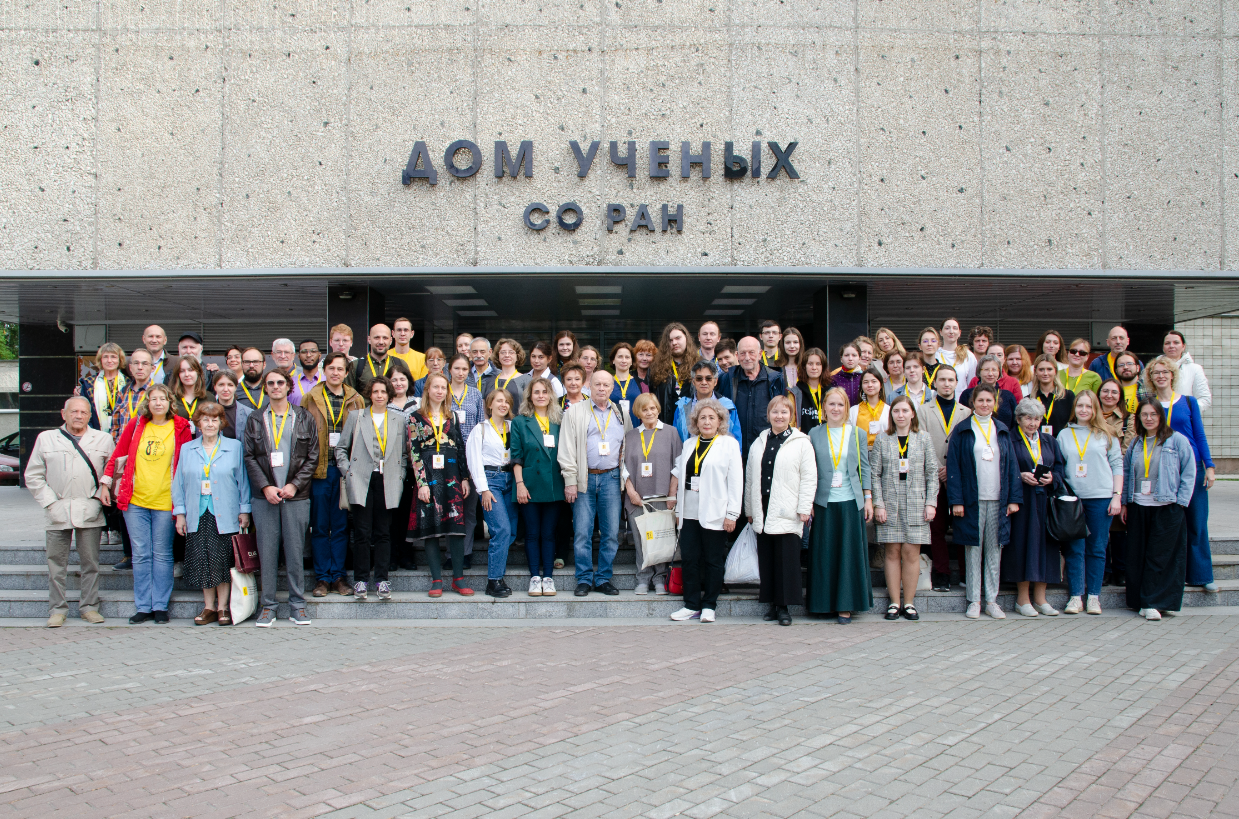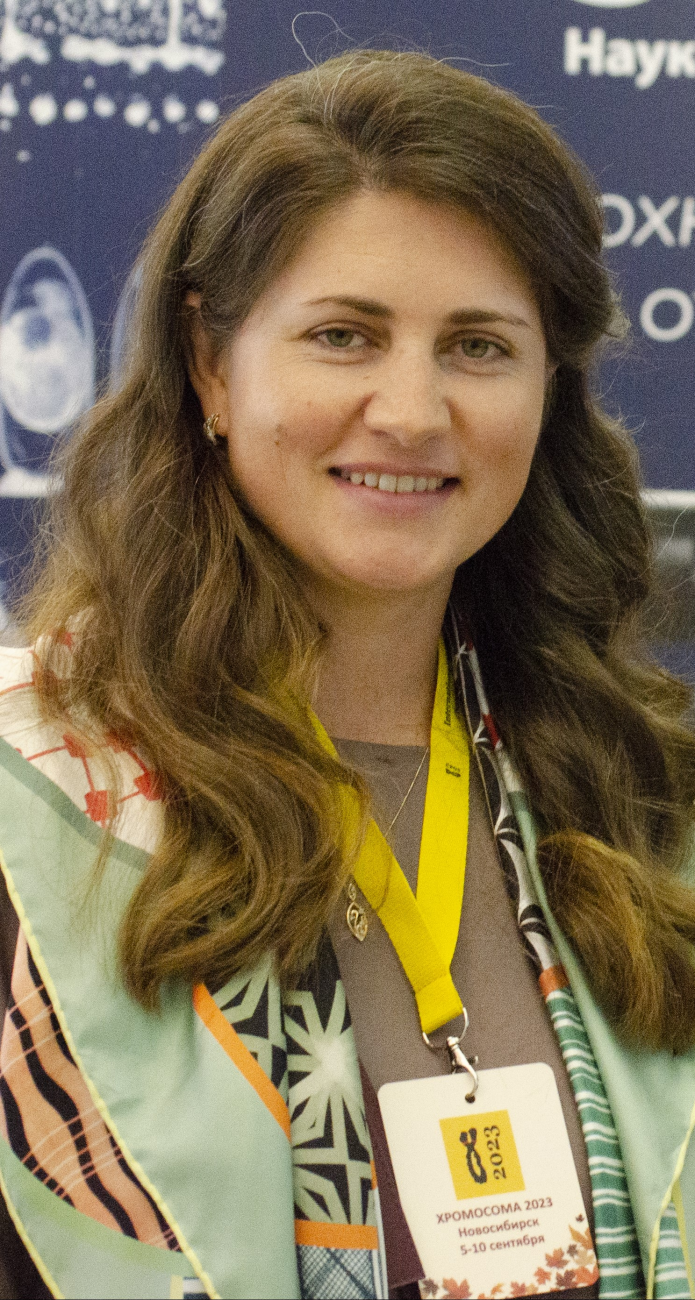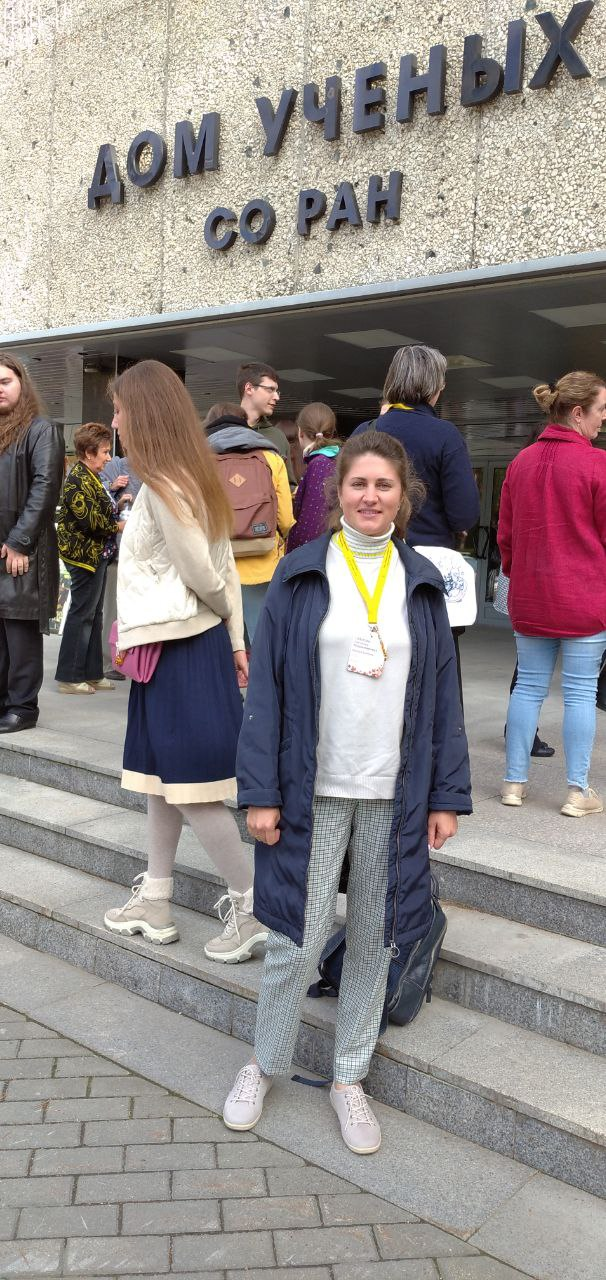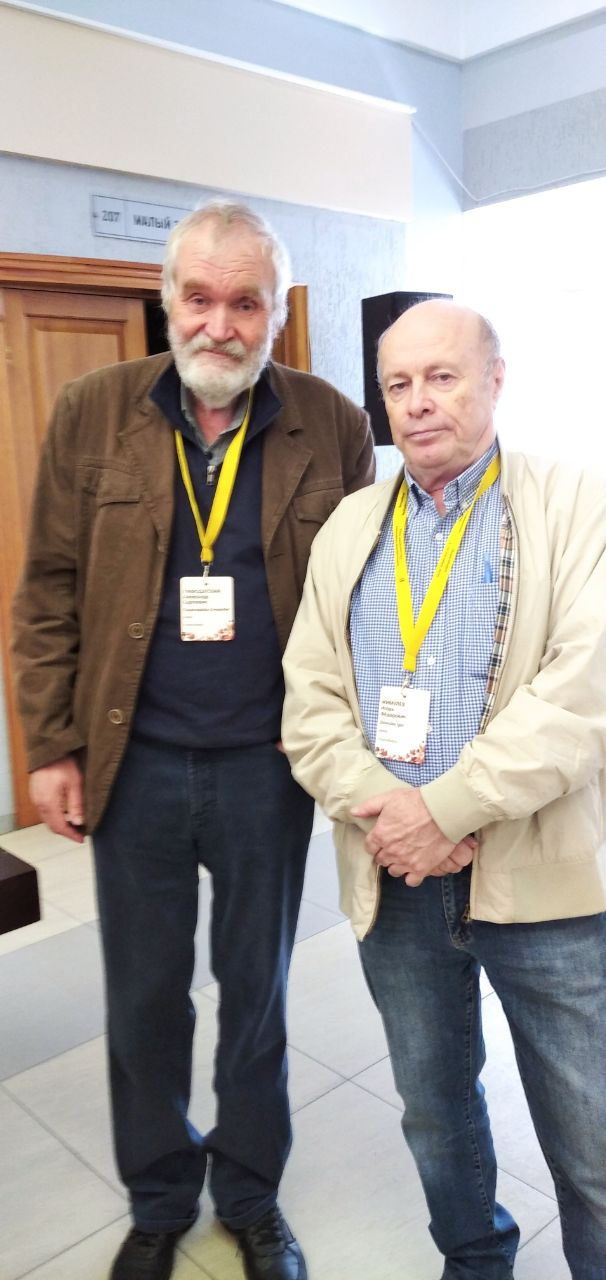
On September 5, the international conference “Chromosome-2023” began in Novosibirsk Akademgorodok, in which employees of two laboratories of the IEE RAS took part - Ph.D. N.Sh. Bulatov and Ph.D. S.V. Pavlova.

In total, approximately 170 Russian and foreign scientists registered to participate in the conference. In the current geopolitical conditions, it was quite difficult to assemble a representative scientific conference, but it was a success, although the 4 days allocated for its holding in the House of Scientists of the Siberian Branch of the Russian Academy of Sciences were barely enough for the scientific program. The Chromosome 2023 conference is a continuation of a series of conferences of the same name in 2009, 2012, 2015 and 2018, held on the initiative of the Institute of Molecular and Cellular Biology of the Siberian Branch of the Russian Academy of Sciences (IMBB SB RAS).
This year, scientists from Novosibirsk, Moscow, St. Petersburg, Tomsk and Irkutsk, as well as from other countries: Kazakhstan, Germany, the USA, Italy, Serbia and China took part in the conference in the format of in-person and online reports and poster presentations.
At the opening session on September 6, introductory lectures were read (I.F. Zhimulev and A.S. Grafodatsky, IMKB; N.Sh. Bulatova, IEE). Meetings of 9 sections were devoted to the most pressing issues of modern chromosome research on different groups of organisms on the following topics:
I - Chromosomes and genomes (8 reports)
II - Heterochromatin (7 reports)
III - Genetic organization of interphase chromosomes (13 reports)
IV - Evolution of eukaryotic genomes (3 reports)
V - Core structure (6 reports)
VI - Special chromosomes (4 reports)
VII - Medical genetics (7 reports)
VIII - Chromosomes and cell division (4 reports)
IX - B chromosomes, telomeres, centromeres and transposable elements (11 reports).
Section meetings were held from September 6 to 9, and on September 10 and 11, participants were treated to excursions to iconic places of the city and natural attractions of the Novosibirsk region. The conference program and materials are published in electronic format in two working languages of the scientific event, Russian and English.
The organizers of the Chromosome-2023 conference were the Institute of Molecular and Cellular Biology of the Siberian Branch of the Russian Academy of Sciences, the Siberian Branch of the Russian Academy of Sciences and Novosibirsk State University. The conference was supported within the framework of the Priority 2030 program.

From the Institute of Ecology and Evolution of the Russian Academy of Sciences, two collective reports were presented at the conference, co-authored by collaborators from different institutes of the Russian Academy of Sciences. Together with links to two of our reports*, the following are the titles of reports close to the topics of our institute, in square brackets the translation into Russian of the titles of abstracts published in English. All are included in the electronic collection of abstracts (cited above).

*Orlov V.N. 1, Lyapunova E.A. 2, Baskevich M.I. 1, Kartavtseva I.V. 3, Malygin V.M. 4, Bulatova N.Sh. 1. 1 A.N. Severtsov Institute of Ecology and EvolutionRAS, Moscow, 2 N.K. Koltsov Institute of Developmental Biology RAS, Moscow; 3 Biological and Soil Institute of the Far Eastern Branch of the Russian Academy of Sciences, Vladivostok; 4 Faculty of Biology, Moscow State University, Moscow. – Advances in mammalian cytogenetics in the development of chromosomal diagnostics and species systems.
*Pavlova S.V. 1.5, Romanenko S.A. 2, Matveevsky S.N. 3, Kuksin A.N. 4, Dvoyashov I.A. 5, Kovalskaya Yu.M. 1, Petrova T.V. 5. 1 A.N. Severtsov Institute of Ecology and Evolution, RAS, Moscow; 2 Institute of Molecular and Cellular Biology, SB RAS, Novosibirsk; 3 Vavilov Institute of General Genetics, RAS, Moscow; 4 Tuvinian Institute for Exploration of Natural Resources, SB RAS, Kyzyl; 5 Zoological Institute, RAS, Saint-Petersburg. – Karyotype diversity and B chromosome polymorphism within cryptic species of the subgenus Stenocranius (Cricetidae, Rodentia).

Topics of reports from the conference program:
Andreenkova N.G. – Genetic relationships of black kite (Milvus migrans) populations in Asia, Taiwan, Japan and Australia: is there a Taiwanese subspecies? Novosibirsk, IMBB.
Baklushinskaya I.Yu. – Chromosomal rearrangements and speciation: mole voles of the subgenus Ellobius. Moscow, IBR.
Beklemisheva V.R. – Study of constitutive heterochromatin and comparative chromosome maps of martens of the genus Martes (Mustelidae, Carnivora, Mammalia): the use of bioinformatics analysis and molecular cytogenetics methods. Novosibirsk, IMBB.
Bikchurina T.I. – Hybrid sterility of male gray voles of the genus Microtus: cytogenetic and transcriptomic analysis. Novosibirsk, NSU.
Mohamed Kader Haidara – [Inversion polymorphism in natural populations of malaria mosquitoes
Anopheles subgroup Maculipennis in Western Siberia due to infection by parasitic nematodes]. Tomsk, TSU.
Kulak M.M. – Telomere length in the chromosomes of the red-eared turtle Trachemys scripta elegans. St. Petersburg, St. Petersburg State University.
Kusliy M.A. – Genetic diversity of horses of the Sargarin-Alekseevskaya culture of the Ob-Irtysh region. Western Siberia. Novosibirsk, IMBB.
Lemskaya N.M. –Differential staining of heterochromatin using the CDAG method. Novosibirsk, IMBB.
Modina S.A. – Phylogeography of the woolly mammoth (Mammuthus primigenius) of Eastern Siberia in Late Pleistocene. Novosibirsk, IMBB.
Molodtseva A.S. – Species identification of mammals accompanying humans at sites in the mountainous regions of Central Asia. Novosibirsk, IMBB.
Rubtsova D.V. Hybrid sterility in voles of the genus Alexandromys: what chromosomal polymorphism and heterozygosity for rearrangements are capable of. Novosibirsk, ITsIG.
Tomarovsky A.A. – Assessment of the level of heterozygosity of sable (Martes zibellina), pine marten (Martes martes) and their hybrids. Novosibirsk, IMBB.
Avel V. Urin – [New genomic data on the origin of the hybrid parthenogenetic lizard species Darevskia unisexualis]. Moscow, IBG.
Utkin Y.A. – Genetic diversity of silver crucian carp (Carassius gibelio) in Siberia and the Far East. Novosibirsk, IMBB.
Compiled by N.Sh. Bulatova, S.V. Pavlova
